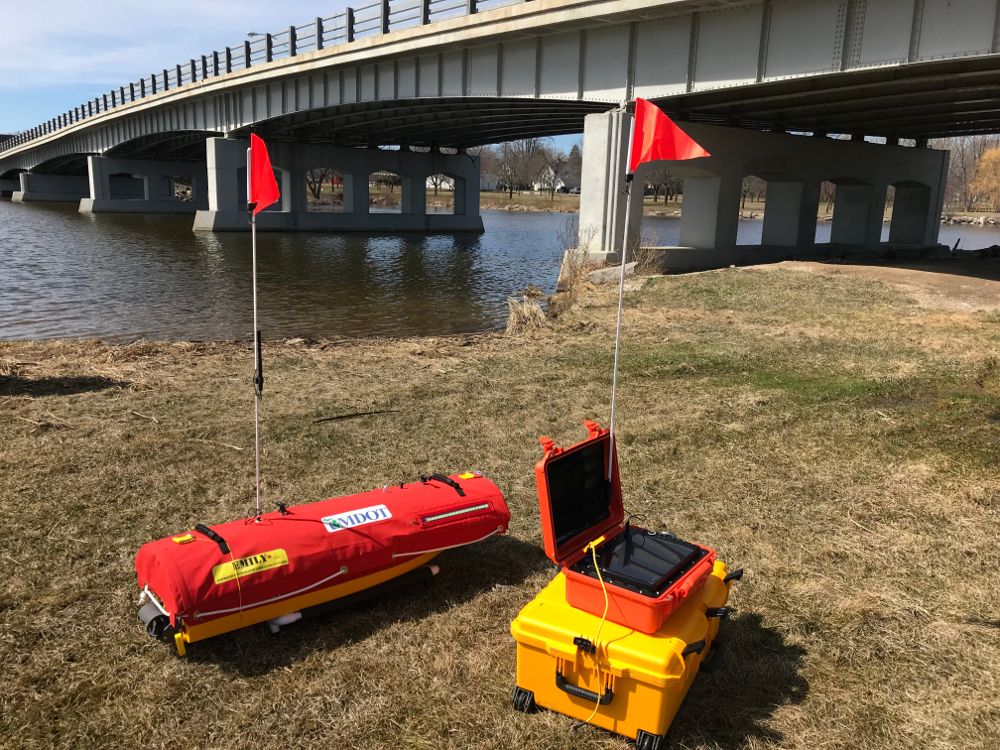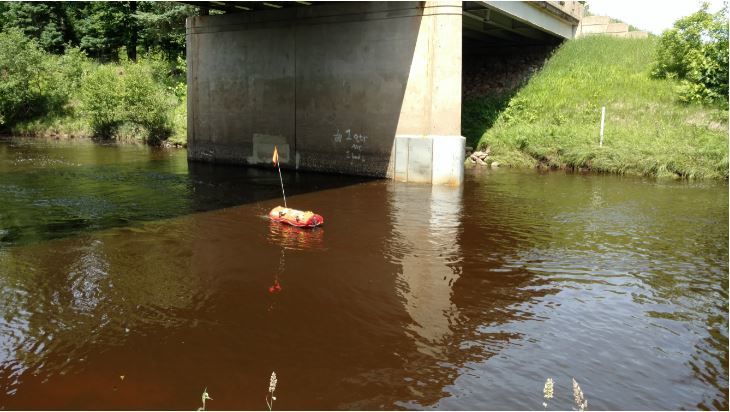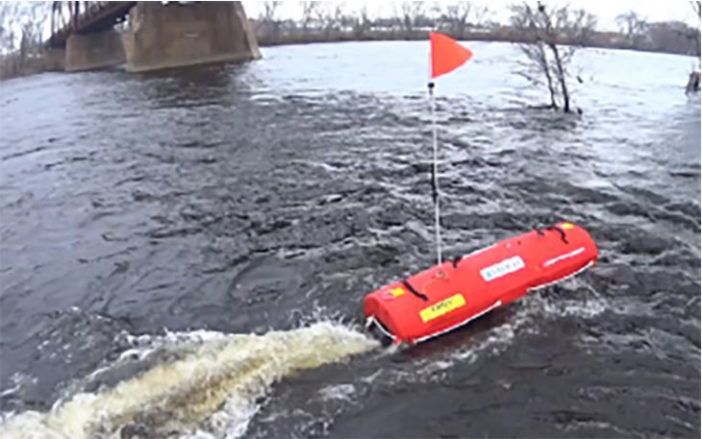While several state Departments of Transportation (DOTs) are currently trialling unmanned aerial vehicles (UAVs) or drones to survey highway infrastructures, Michigan has become one of the first to use remote-controlled boats to perform bridge inspections.
The removal of sediment around bridge substructure by fast-moving water, typically exposing the footings or piles, is known as ‘scour’ and is a leading cause of bridge failure. The Michigan Department of Transportation (MDOT) has identified more than 400 bridges on the state highway system and nearly 1,200 on local roads that are ‘scour critical’ and in need of close monitoring during high-water events. MDOT routinely inspects bridges for scour around abutments and piers. Typically, this involves inspectors launching a boat and probing the riverbed or channel bottom with metal rods, weighted tape measures or sonar devices. However, during high-water flow events, turbulence and fast-moving debris in the water could endanger workers using traditional tools like piloted boats and under-bridge inspection equipment.

Three years ago, MDOT began a research project to look for safer alternatives and one that met the criteria was an unmanned surface vessel (USV) or remote-piloted ‘drone’ boat, equipped with sonar and a camera to allow inspectors to take measurements and capture images from the shore. After reviewing available devices, MDOT settled on a USV called Sonar EMILY (EMergency Integrated LanYard) that came out of a partnership between the US Navy’s Small Business Technology Transfer program and a private company, Hydronalix.
EMILY is a powerful, manoeuvrable water-jet-powered, Kevlar-hulled buoy that is equipped with a sonar unit that can measure water depths and produce side-scan and down-scan images of bridge substructures and streambeds. The system also has a topside camera to view the underside of bridges, and along with its SAR Hawk post-processing software, was found to be the most effective and cost-efficient setup to meet MDOT’s requirements. Transported in a pickup and easily deployed by a two-person team, MDOT is strategically placing four USVs throughout the state to provide a consistent and accurate stream of data to inspectors on dry land.

“Any time we have a major storm event, inspectors are required to go out and monitor these bridges to make sure they’re safe and that nothing catastrophic is going to happen to them,” explained Chad Skrocki, project manager and assistant bridge engineer for MDOT’s Bay Region. “In the past, scour inspections were difficult, especially during periods where water was surging. We wanted to come up with a method that was safe and easy for inspectors to use. Using the USV is much safer and less labour-intensive than traditional inspection methods for detecting scour. It provides a great deal of information, in real-time, to the inspector about what is occurring to the channel bottom below the water surface around the bridge substructures.”
Brian Schroeder of Ayres Associates, the project’s principal researcher, added, “The environment this vessel is going to operate in is fairly extreme. It needs to go fast, gather the data we want and be reasonably durable. EMILY checked all the boxes. The preliminary inspections can become far more efficient and then we can use manned inspections to verify the things we’ve found with the USVs.”





